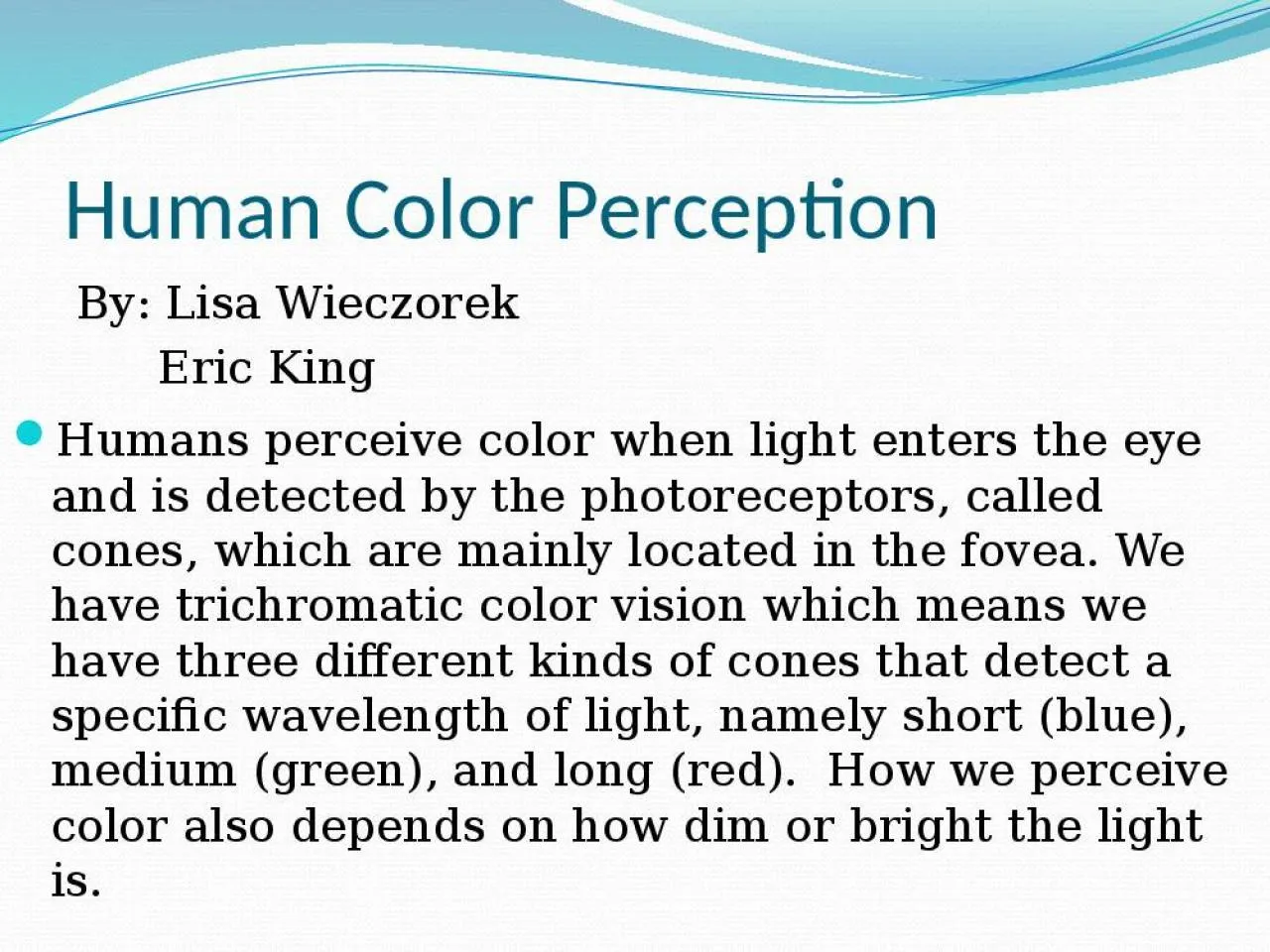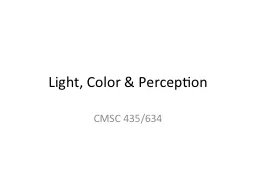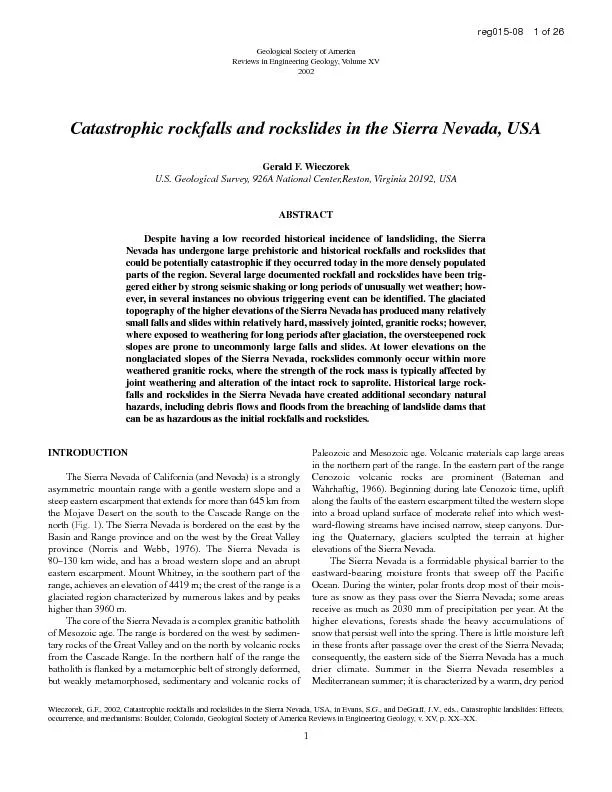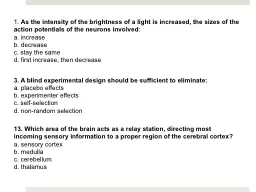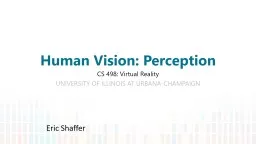PPT-Human Color Perception By: Lisa Wieczorek
Author : byrne | Published Date : 2022-05-15
Eric King Humans perceive color when light enters the eye and is detected by the photoreceptors called cones which are mainly located in the fovea We have trichromatic
Presentation Embed Code
Download Presentation
Download Presentation The PPT/PDF document "Human Color Perception By: Lisa Wieczor..." is the property of its rightful owner. Permission is granted to download and print the materials on this website for personal, non-commercial use only, and to display it on your personal computer provided you do not modify the materials and that you retain all copyright notices contained in the materials. By downloading content from our website, you accept the terms of this agreement.
Human Color Perception By: Lisa Wieczorek: Transcript
Download Rules Of Document
"Human Color Perception By: Lisa Wieczorek"The content belongs to its owner. You may download and print it for personal use, without modification, and keep all copyright notices. By downloading, you agree to these terms.
Related Documents

